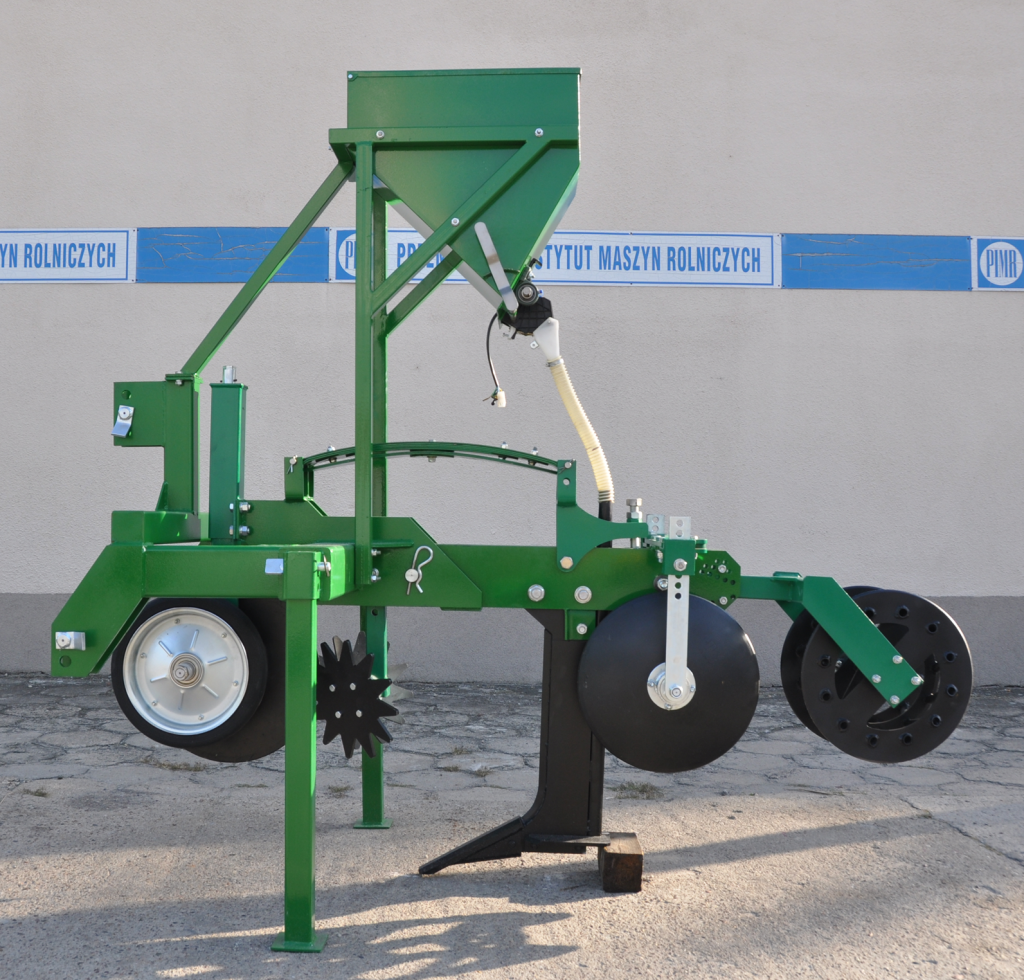Invention entitled ‘Working section for strip-till and fertilizer spreading’ (Pat.222932/P.408166)
Description:
The strip-till units consist of a series of working elements that form sections to prepare narrow strips of soil for sowing seeds of crops grown in widely spaced rows.
With the invention, the design of the working section has been modernized with a disc cutter, rotating finger stars, with a tine with a fertilizer sowing wire, rotating discs, a string shaft, which are connected to a body equipped with running wheels. The working section according to the invention does not require energy from the power take-off from the tractor pulling the unit, all components use passive energy.
With the invention, the design of the working section has been modernized with a disc cutter, rotating finger stars, with a tine with a fertilizer sowing wire, rotating discs, a string shaft, which are connected to a body equipped with running wheels. The working section according to the invention does not require energy from the power take-off from the tractor pulling the unit, all components use passive energy.
During cultivation, the running wheels press the crop residue against the field surface, facilitating its cutting with a disc cutter. Rotating finger stars deposit the cut crop residue sideways and clear the field surface in front of the tine. The tine, equipped with a foot that increases the width of the soil loosening and covers the outlet of the tubular tube, loosens the soil to a depth determined by the running wheels and the string roller. The tubular hose spreads fertilizer under the layer of loosened soil. The rotating discs rake the soil piled up on the surface by the tine, while the string roller crushes and presses the soil. The spring absorbs the impact of stones, causing the tine, rotating discs and string roller to deflect slightly, and quickly return to the full depth of the tine after bypassing an obstacle.

Benefits:
- no need to supply additional energy to the unit via the power take-off,
- deep soil loosening without excessive soil uplift,
- the ability to apply fertilizer in a wide range of depths,
- reduced operating resistance during tool operation.
Status of legal protection:
The technology consists of patent Pat.222932 granted by the Patent Office of the Republic of Poland, in force from May 9, 2014.
Property rights to the invention are vested 100% in the Łukasiewicz Research Network – Poznań Institute of Technology.

Contact person:
Tomasz Szulc
Główny specjalista – Kierownik Sekcji Rozwoju Maszyn Rolniczych i Leśnych, Grupa Badawcza KonstrukcjiTel.: +48 784 638 264

